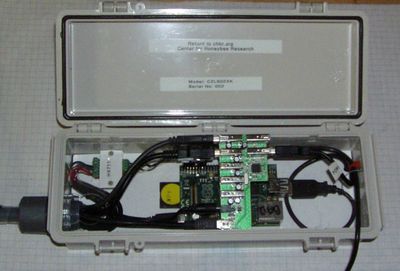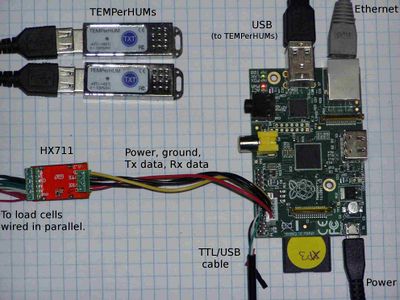Difference between revisions of "Hardware: Overview"
| Line 15: | Line 15: | ||
#one TTL to USB serial converter cable | #one TTL to USB serial converter cable | ||
| − | The rest of the materials can be obtained from local suppliers. | + | The rest of the materials can be obtained from local suppliers. The only tools needed for construction are a hack saw and drill. All of the electronic connections either plug in or use screw terminals. There is no soldering needed. There are no lethal voltages - it can be powered from a cell phone charger or optional solar panel and battery. |
| + | |||
| + | Based on the Raspberry Pi Model A+. | ||
| + | |||
[[Assembly Manual]] | [[Assembly Manual]] | ||
Revision as of 04:03, 3 December 2014
An early goal of Hivetool was to develop a $50 scale. A developers kit is being planned to
- get beta units in the field for testing,
- gather user feedback and
- provide a platform to foster open source community development.
It will be available at cost plus a voluntary contribution to the Center for Honeybee Research, a 501(c)(3) organization to help cover R&D expenses. The kit will contain the hard to find or special order items from China:
- four 50 kg C3 load cells
- one HX711 ADC board with shield and screw terminals attached
- one TTL to USB serial converter cable
The rest of the materials can be obtained from local suppliers. The only tools needed for construction are a hack saw and drill. All of the electronic connections either plug in or use screw terminals. There is no soldering needed. There are no lethal voltages - it can be powered from a cell phone charger or optional solar panel and battery.
Based on the Raspberry Pi Model A+.


